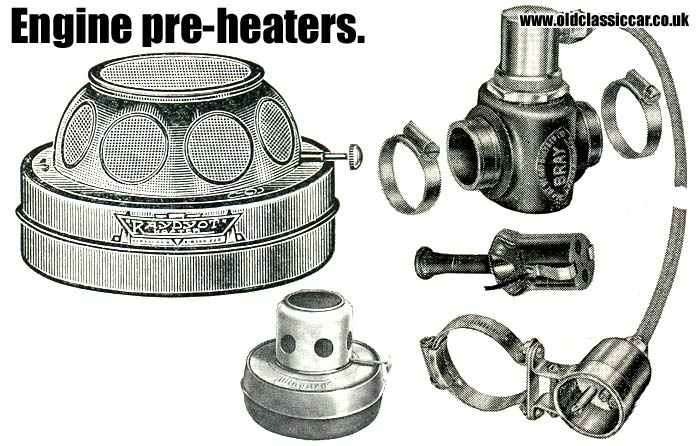The EVERWARM Radiator Heater
Up until the mid 1920s, antifreeze was a little-heard of product, so the prudent car owner, or probably his or her driver, would have to remember to drain the radiator of its water every night in the colder months, to avoid the water freezing and cracking the radiator. Drains could usually be found on the engine block also, so they would need opening up also to protect the engine. Ethylene glycol anti-freeze would provide a solution to the problem, but its use even in the late 20s was not widespread.
|
|
The other option available was to purchase a sump heater (examples of which can be seen further down). Fuelled by paraffin, these machines, usually quite flat and circular in appearance, were designed to be slid beneath the motorcar, the warmth radiating upwards and warding off the onset of frozen coolant within the engine.
|
|
The unit shown alongside, the EVERWARM Radiator Lamp works in a similar fashion, but judging by the shape I think was designed to hang beneath the car's bonnet, hooking on one of the radiator support rods that would usually be found under the bonnet of cars from that era. Priced (in 1926) at 17/6, it consumed a miserly amount of paraffin. As well as reducing the chances of a cracked block or radiator, the constantly warm engine would usually be easier to swing into life on a cold morning, a handy benefit especially as starting handles were often the order of the day.
|
|
Under-bonnet & sump heaters like this could still be found in use well into the 1950s, although by this time anti-freeze was easily available (for instance Fina Thermidor), and electric starters were standard fitment on new cars, so the need for such heaters began to tail off. I can't imagine they were especially safe either, positioned as they were in such close proximity to fuel lines, at least one carburettor, and in the case of some commercial vehicles, the Autovac unit. A drip from any of these fuel systems while the owner was lighting the heater could have been interesting!
|
|

|






